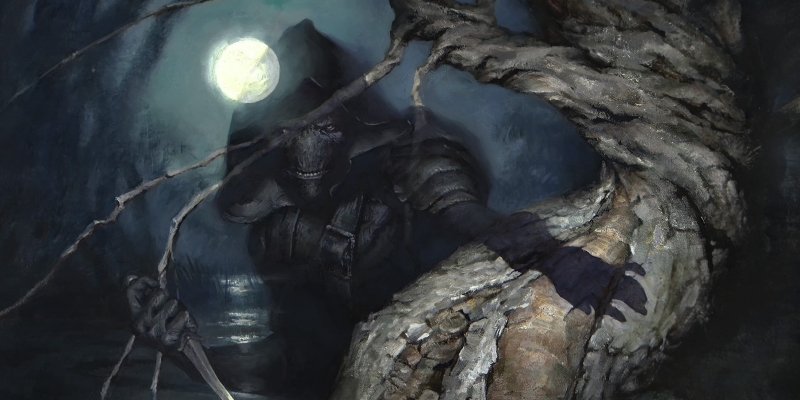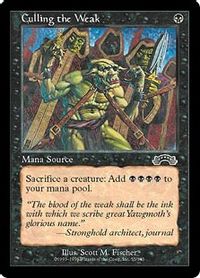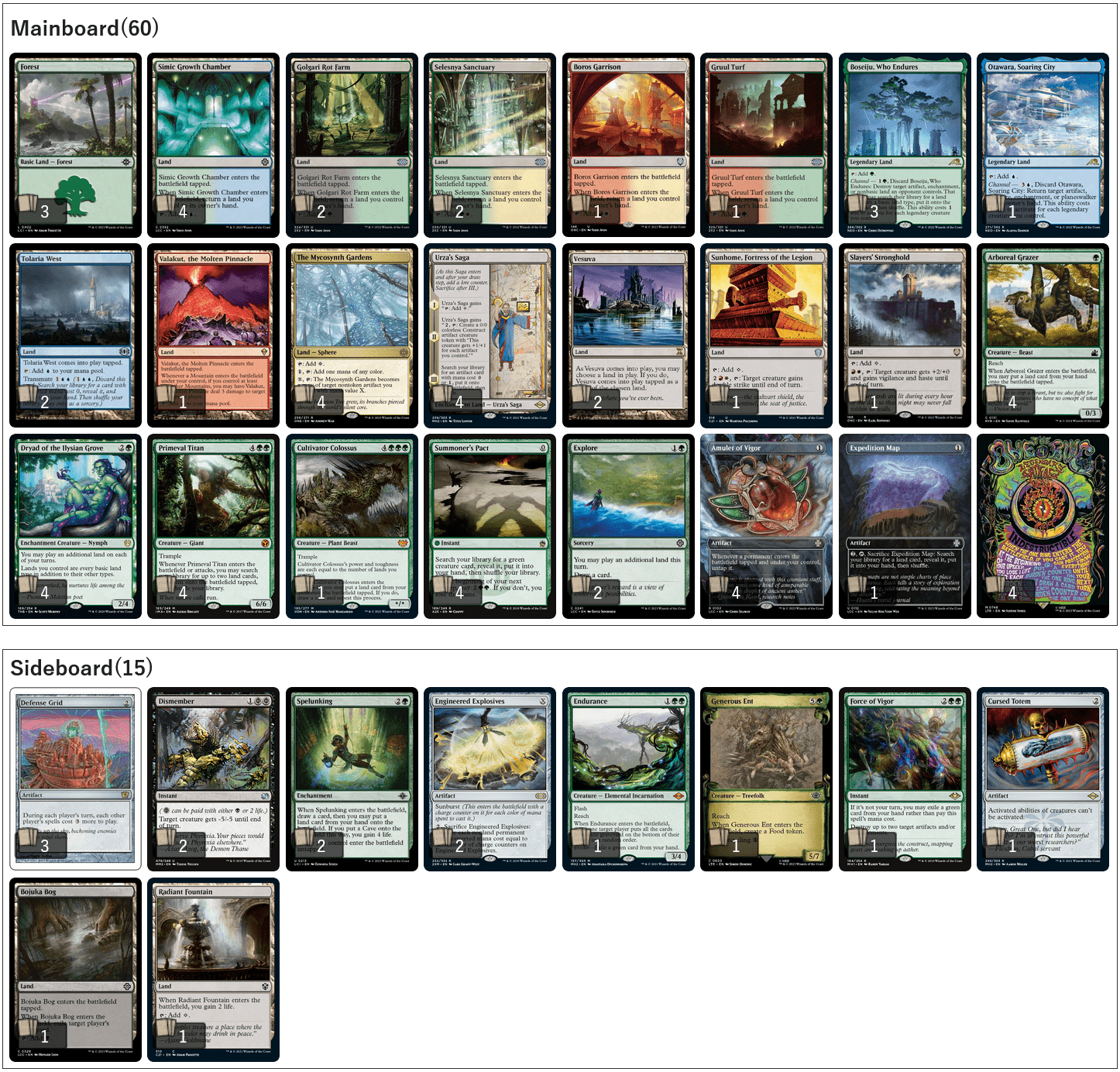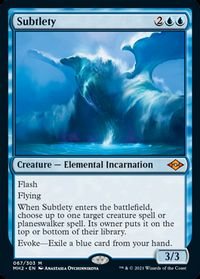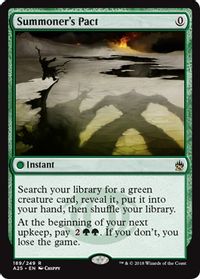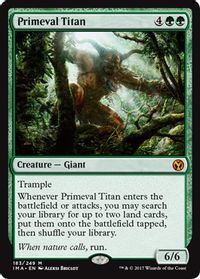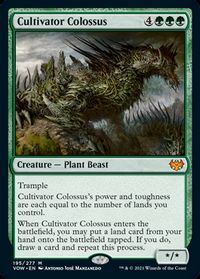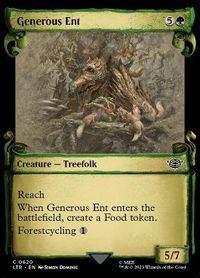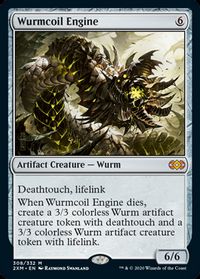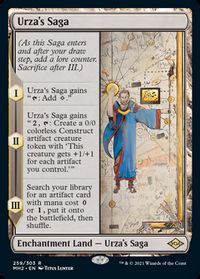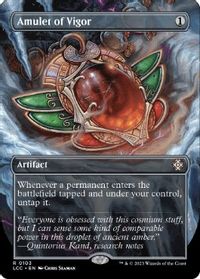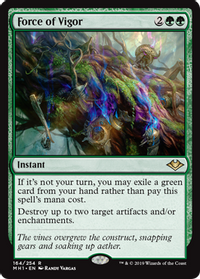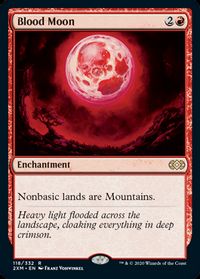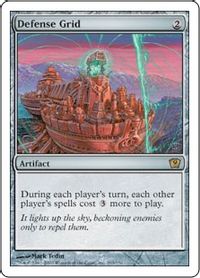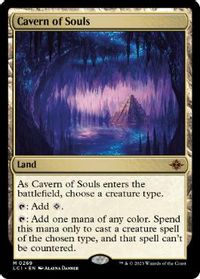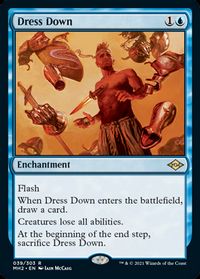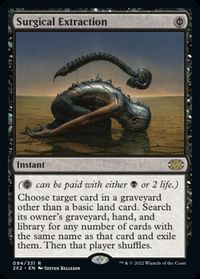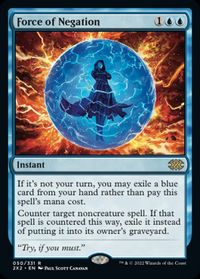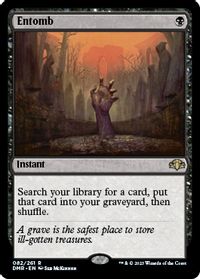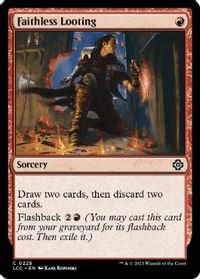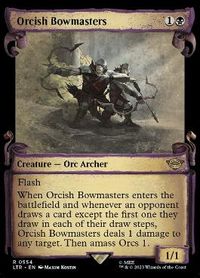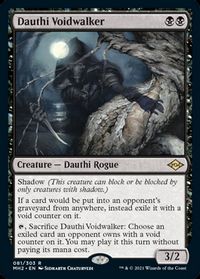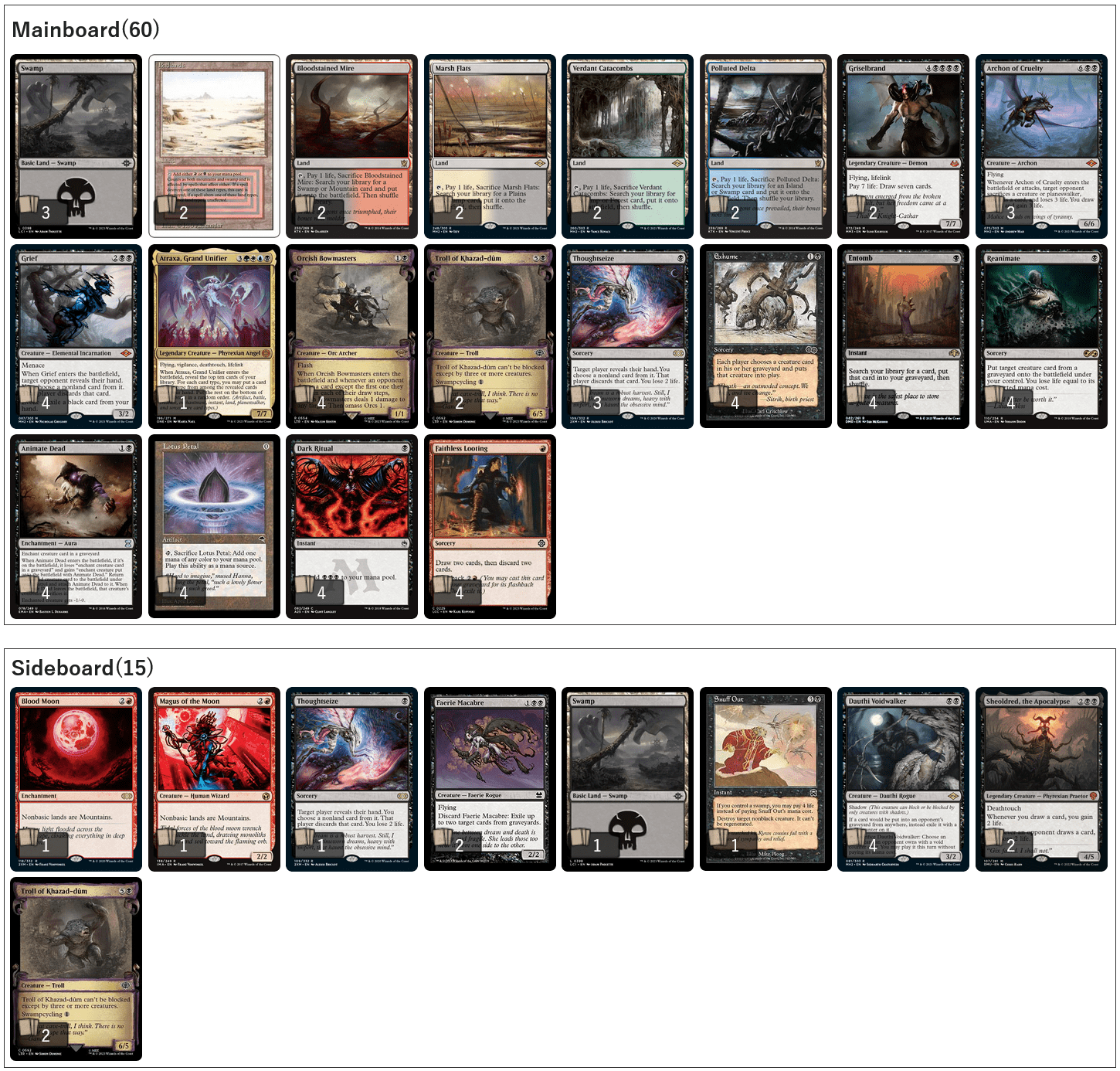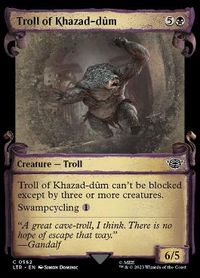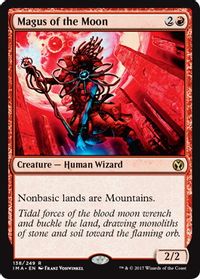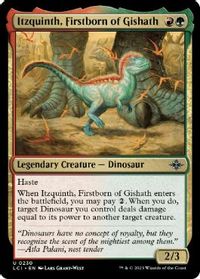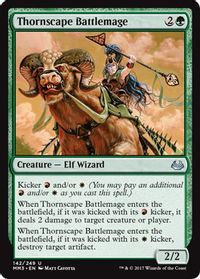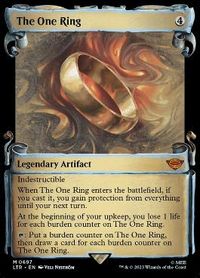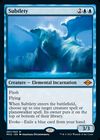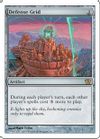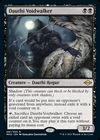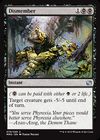Introduction
There are few things I enjoy more in Magic than when a sideboard plan just suddenly clicks and it all makes sense. It’s not always easy to get there – especially with combo decks!
Today I’ll go over the evolution of my sideboard philosophy with a pair of archetypes I’ve committed a lot of time to – mainly Modern Amulet Titan and Legacy Reanimator – and the lessons I’ve learned when working on those decks.
Lesson 1: Find Your Cards’ Bad Matchups
When preparing your post-board deck, in the most basic sense, you want to determine weak cards. As the joke often goes, “Cut the bad ones, add the good ones” – but every Magic player is familiar with the paralyzing inability to find the correct cuts when sideboarding.
In more traditional, answer-oriented decks it tends to be simpler – if the opponent presents no creatures, 《Fatal Push》 is the card to remove. But sometimes finding the culprit takes more work.
In a combo deck, your cards will likely contribute in some way to enacting your proactive game plan. Instead of shelving interaction that doesn’t cover opposing threats, you need to start with identifying the weak links in your strategy.
Amulet Titan
《Subtlety》 tends to be strong against Amulet Titan. Normally, against most countermagic-style effects, being patient with your plays and presenting threat after threat would be the best solution – but while it’s easy to make that mental shortcut here, 《Subtlety》 can be cast for free and will often show up in decks that will use the mana and tempo gained with 《Subtlety》 to crush you.
Beating a 《Subtlety》 is the easiest if you force your opponent to evoke it and you can recast your creature on the following turn – it’s really hard to beat 《Subtlety》 if you had to find your creature with 《Summoner’s Pact》.
A useful way to frame it would be using the traditional lens of matchups in a metagame and applying that to the specific card. 《Summoner’s Pact》 – has a weak matchup against 《Subtlety》.
Creatures you can recast turn after turn instead – be it 《Primeval Titan》 or 《Cultivator Colossus》, or any type of sideboard threat like 《Generous Ent》《Wurmcoil Engine》 or 《Dragonlord Dromoka》 – will have a better 《Subtlety》 matchup.
《Urza’s Saga》 is great at assembling double 《Amulet of Vigor》 and often lets you assemble a turn-three win, but it has some really bad matchups post board. 《Force of Vigor》 has an easy time finding a second target alongside 《Urza’s Saga》, so it will always match up well; 《Blood Moon》, on the other hand, has a much better 《Urza’s Saga》 matchup on the play than it does on the draw.
There are also – of course – degrees to matchups between cards. As an example, 《Defense Grid》 is a relatively new development in Amulet sideboards. Gone are the days when a 《Cavern of Souls》 solved all of your problems. Nowadays, 《Cavern of Souls》 has an excellent 《Counterspell》 matchup but fails to tackle various other ways 《Primeval Titan》 can be fought on the stack.
《Dress Down》《Subtlety》《Tishana’s Tidebinder》 and removal spells all attack Titan from different angles. 《Defense Grid》 conveniently has a pretty solid matchup against all those types of interaction – even holding its ground against 《Force of Vigor》 being a pain to remove or protecting your 《The One Ring》 through 《Blood Moon》.
But the piece of technology I want to discuss is a card that showed up in Amulet decklists for a brief moment before 《Defense Grid》 – I’m talking about 《Silence》. 《Silence》 tried to tackle the same issues as 《Defense Grid》 – but its overall matchup spread was too weak, with blind spots in every matchup you’d like to bring it against either 《Force of Vigor》 or 《Blood Moon》.
Reanimator
Legacy Reanimator is what initially made me think of the principle. In most blue matchups, mainly Delver, you can expect your opponents to trim on removal and add a few copies of 《Surgical Extraction》 and 《Force of Negation》.
Using traditional means of putting creatures into your graveyard – 《Entomb》 and 《Faithless Looting》 – is inherently a card disadvantage; which ends up especially devastating if you end up running straight into an 《Surgical Extraction》. While a hand that reanimates quickly, with discard spell protection, is still really strong, let’s count up how 《Faithless Looting》 can cost you a game:
– Fetching a 《Badlands》 will leave you exposed to 《Wasteland》 – and right after a card disadvantage spell, 《Wasteland》 is going to hurt the most!
– 《Faithless Looting》 requires you to keep a hefty number of reanimation targets to draw with it and the common play pattern of Looting first to find your discard or reanimation spells will expose you to 《Surgical Extraction》.
– And last but not least – 《Orcish Bowmasters》 is a popular Legacy card! It’s punishing to cast 《Faithless Looting》 with Bowmasters in play.
When spelled out, 《Faithless Looting》 seems to have a lot of weak matchups in the Delver deck, exacerbated in post-board games.
You should take note of all the bad matchups between cards that can happen after sideboarding and try to address them – which gets me to the second step of the process.
Lesson 2: Find Out What Plans Are Possible – And Focus On Your Strengths
In Reanimator, I was frustrated with the poor performance of the main plan in post-board games. 《Dauthi Voidwalker》 was already a common sideboard tool in the deck – mostly for the ability – 《Dauthi Voidwalker》 couldn’t function as an alternative gameplan alone. Ever since 《Orcish Bowmasters》 got printed, I tried to incorporate them together into some kind of a sideboard juke – but couldn’t piece it all together.
It took until I applied the first lesson to the deck and focused on finding the weakest link. The question then became: can I abandon 《Faithless Looting》 while still presenting a functioning, powerful deck?
Rough! https://t.co/dSeqYDMtmM pic.twitter.com/dO9LAeuN6J
— Piotr 'kanister' Głogowski (@kanister_mtg) December 3, 2023
I borrowed technology from other existing decks – Dimir Scam decks became popular in Legacy around that time, and they were using 《Reanimate》 as a fair card alongside 《Grief》 and 《Troll of Khazad-dûm》 to a good effect.
《Troll of Khazad-dûm》 fit the puzzle perfectly, providing much-needed consistency as effectively a land you can reanimate. 《Entomb》 package was still present, leaving the possibility of a nut draw on the table, the castable 2-drops successfully pressured opponents who mulliganed for graveyard hate, and discard spells punch holes in opposing strategies if you get to ignore their graveyard hate.
And it was a success! I was able to use that sideboard plan to get inches away from qualifying for MOCS again. (Bummer – but it’s not the last you’ve seen of me there!)
Not every time a cohesive and functional sideboard juke like that can be found – Reanimator only got there with some recent printings. Amulet, for example, is an extremely tight combo deck, with a monstrous manabase taking over half of the deck space and spells that don’t play a traditional Magic game well. Instead of avoiding hate, Amulet needs to force its way through it.
Lesson 3: Pick Your Fights
Sometimes cards can match up well enough against your deck that to beat them you’ll need to let yourself get a bit lucky – and that’s fine!
Amulet Titan is a beautiful example here. 《Magus of the Moon》, unlike 《Blood Moon》 itself, can’t be answered by the naturally and neatly fitting 《Boseiju, Who Endures》. You need actual removal spells; 《Dismember》 being the best and most efficient go-to option. The problem arises – you need to draw it.
Many players get tempted by the toolbox aspects of 《Summoner’s Pact》 and 《Urza’s Saga》, trying to find a perfect solution that will let them fight through a resolved 《Magus of the Moon》. You’ll occasionally notice 《Itzquinth, Firstborn of Gishath》 or 《Thornscape Battlemage》 in Amulet’s sideboards attempting to handle exactly that problem.
The question that you need to answer is: is that tutorable option presenting a realistic and achievable path to victory? How well need your cards to line up to turn the tides of a match with a Battlemage?
In this specific example, you need a 《Forest》 – far from a given. You need four lands, which is harder to do when your Bouncelands played before 《Blood Moon》 set you back lands. You need to dodge any potential 《Magus of the Moon》 protection – be it 《Not Dead After All》 or 《Counterspell》 – and only after all of those conditions have been cleared, you still most likely set yourself back an entire turn having to pay for your 《Summoner’s Pact》!
You need to successfully pass through that many checkpoints for your 《Thornscape Battlemage》‘s tutor ability to contribute to your win. To use the earlier framing: having access to a Battlemage doesn’t improve your 《Summoner’s Pact》‘s matchup against 《Magus of the Moon》 by much!
A more realistic path to victory is the one where you manage to draw a 《Dismember》 naturally, sneak it in on 《Magus of the Moon》 immediately before the opponent can protect it – and proceed to combo off, with a smaller setback of one mana. Or, you can stick 《The One Ring》 and drag the game out while drawing a ton of cards – having an efficient out to find will help convert your cards into a victory.
Is it true that you’ll 《Dismember》 less often than Pact? Without a doubt! But an important thing to remember is that you should build your deck to have the highest likelihood of winning the game – which does not necessarily equal being able to win from any position.
That’s all I have for you today – I hope you can find those concepts similarly useful when working on your sideboard plans!


